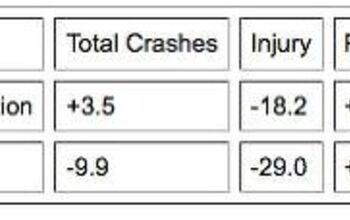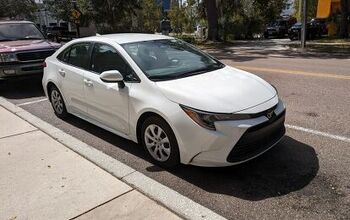California: Accidents Increase at Photo Enforced Intersections
The city council in Highland, California decided three years ago to allow an Australian company, Redflex Traffic Systems, issue tickets at two intersections. Nearly 4300 “violations” have been generated since August 2008, each worth nearly $500. A committee of the council opened debate yesterday on whether the automated ticketing machine contract should be renewed. When the same question was debated last year, officials focused on safety.
“We’ve seen a reduction in serious traffic collisions where the cameras were installed,” Highland City Manager Joe Hughes told the Riverside Press-Enterprise newspaper in May.
More complete data show that this statement was not true and that red light cameras have had no clear, positive impact on intersection safety in Highland. The claim regarding “serious accidents” is undermined by the city’s current admission that accidents at the photo enforced intersections have always tended to be minor.
“Before and after the installation of the red light cameras we have had very few injury accidents at these intersections,” an April 12 presentation by Highland Police Captain Dave Williams stated. “Most accidents are non-injury.”
At the intersection of Highland Avenue and Victoria Avenue, the average number of accidents in the three years before installation of cameras was 7.7 per year. In the two full years following installation, the average increased 23 percent to 9.5. The raw number of injury accidents increased from 2 to 3 over the same periods. At Base Line Street and Sterling Avenue the accident rate was 5.7 prior to camera use and 8.5 after the devices were installed — a 50 percent increase. Injury accidents also increased from 2 to 4.
The small overall number of accidents makes it difficult to draw statistically significant conclusions, but the figures also show that Highland moved to install the red light cameras at Base Line Street and Sterling Avenue even though no accident at the location had ever been attributed by police investigators to red light running. At Highland Avenue and Victoria Avenue, there were just two such accidents in three-and-a-half years.
The city presentation suggests that because accidents in 2010 were not quite as high as in 2009 that collisions are “reverting back to normal levels” because drivers are becoming accustomed to the presence of the cameras. At the same time, accidents nationwide are down to an all-time low because of high unemployment and high gas prices have reduced the amount of driving.
[Courtesy: Thenewspaper.com]
More by The Newspaper
Latest Car Reviews
Read moreLatest Product Reviews
Read moreRecent Comments
- 28-Cars-Later I see velour and pleather seats are back in style.
- 28-Cars-Later Please come buy one of the two things we sell which don't suck.
- 28-Cars-Later Ahahahahaha.
- Carrera I live in Florida and owned summer tires once before on a Corolla. Yes I know, it's a Corolla but it drove much better ( to me) with those on. I would have bought them again but replacement time came during the beginning of the " transitory inflation" and by then, I found all seasons that were much cheaper. Currently I own a slightly more performance oriented Acura TLX -AWD and when the OEM all season Michelin wear out, I will replace them with summer Michelins. Often times, a car comes alive with summer tires but I understand why people don't buy them above South Carolina. I lived in Canada for 5 years and just thinking about swapping twice per year made me anxious.
- Steve Biro I don’t bother with dedicated summer or winter tires. I have no place to store them. But the newest all-weather tires (with the three-peak mountain symbol) are remarkably good year-round. The best of them offer 90 percent of the performance of winter tires and still fall mid-pack among summer ultra-high performance tires. That’s more than enough for my location in New Jersey.

































Comments
Join the conversation
Californians, watch your asses. Your state government is broke, and probably also your city and county governments. They see every citizen as a potential source of fines and taxes. Maybe I should have said "every driver".
On Long Island, New York, Nassau County has just completed a 100 intersection scamera system. At $50 per, the cash strapped county is milking its residents. All I can say is "Destroy"